|
Option #1 - Overlay **SELECTED**
The industry's recommendation. The industry also recommended overlays for 317 and 219. The IURC decided to split those areas.
This option had a predicted life of 71 years.
Overlay Dialing Rules
All Local Calls: 10 digits
Toll Calls: 11 digits (1+10)
Operator Calls: 0+10 digits
10 digit local dialing is reqired everywhere in southern Indiana before the first new area code number can be used anywhere in southern Indiana.
| | 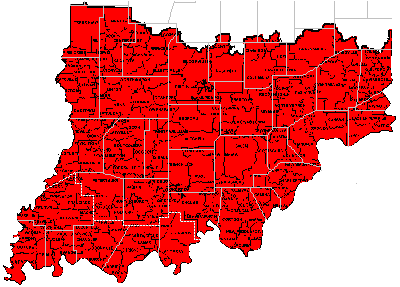 |
|
|
Option #2 - Split
An east vs west split of 812. The west section was expected to survive 60 years before the next relief is needed, the east section was expected to survive 84 years. This violates the industry standard of no more than 10 years imbalance when splitting a code.
Split Dialing Rules
Local Calls - same NPA: 7 digits
Local Calls - other NPA: 10 digits
Toll Calls: 11 digits (1+10)
Operator Calls: 0+10 digits
The area keeping 812 area code would be determined by the IURC.
This option (and other split options) were rejected in part due to the IURC not wanting to choose who would keep the 812 area code.
| | 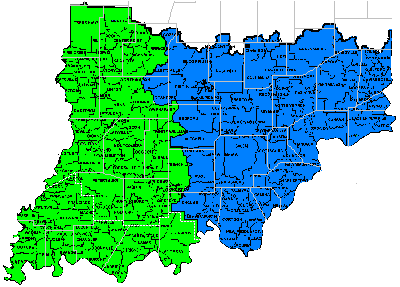 |
Option #3 - Split
A north vs south split of 812. The north section was expected to survive 67 years before the next relief is needed, the south section was expected to survive 76 years. The 9 years difference barely fits under the industry standard.
| | 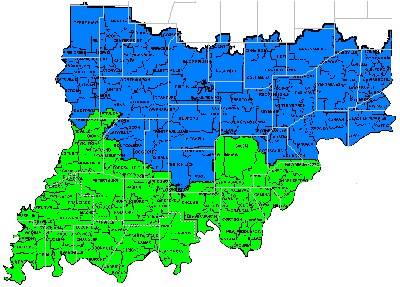 |
Option #4 - Split
A north vs south split of 812. Both the north and south sections were expected to survive 71 years before the next relief is needed. This is the goal under the industry standard (equal life).
| | 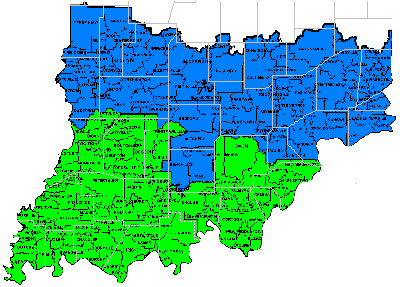 |
Option #5 - Phased Overlay
This option would overlay a portion of the 812 area code (requiring 10 digit local dialing in that portion). Remaining 812 area code numbers would be assigned outside of the overlay area while new area code numbers would be assigned inside the overlay area. The portion first receiving the overlay is shown in red.
Once all 812 area code numbers are exhausted the overlay would expand to cover all of southern Indiana (similar to option 1).
With the dividing line shown the phased portion of the overlay was expected to last four years. Then all of 812 would be overlaid for a lifetime of 71 years.
This option (and other phased overlays) was rejected due to the short period of time that it would be until the rest of 812 needed relief. The IURC considered it unfair that part of the code had to go to 10 digit dialing immediately and the rest could put it off a few years.
| | 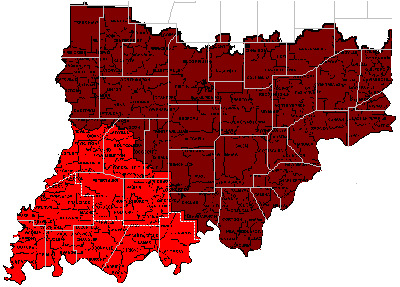 |
Option #6 - Phased Overlay
This was another phased overlay similar to option #5 with a slight modifications to the line to remove Plainville from the initial overlay.
With the dividing line shown the phased portion of the overlay was also expected to last four years. Then all of 812 would be overlaid for a lifetime of 71 years.
| | 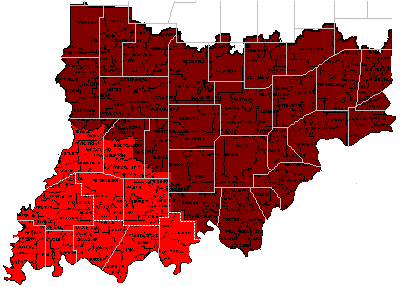 |
Option #7 - Phased Overlay
This was another phased overlay similar to options #5 and #6 with a major modifications to the line to include 25 more exchanges in the initial overlay.
With the dividing line shown the phased portion of the overlay was expected to last 5.6 years. Then all of 812 would be overlaid for a lifetime of 71 years.
All of the "phased overlay" options end up with the same result: A complete overlay of southern Indiana requiring 10 digit local dialing by 2020.
| | 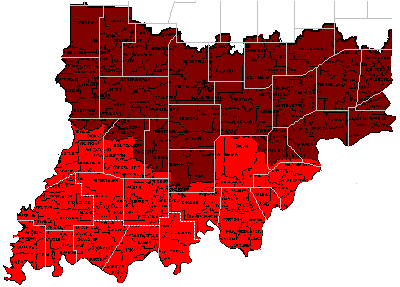 |







